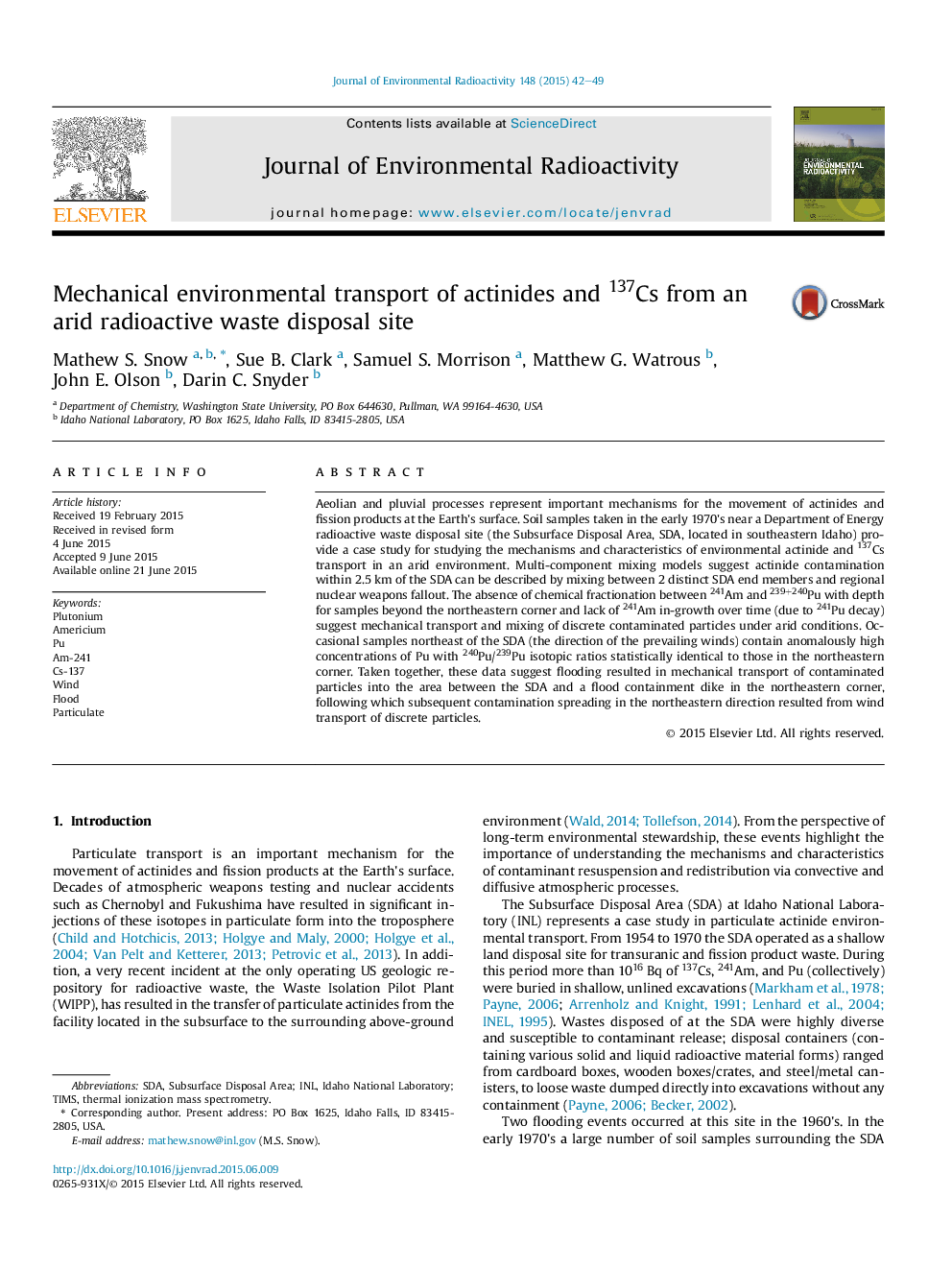| کد مقاله | کد نشریه | سال انتشار | مقاله انگلیسی | نسخه تمام متن |
|---|---|---|---|---|
| 1737887 | 1521585 | 2015 | 8 صفحه PDF | دانلود رایگان |

• Pu isotopic ratios from the SDA range from at least 0.059 to 0.069.
• Frequent Pu “hot particles” with low Pu isotope ratios observed in samples at distance.
• Similar Am/Pu ratios with depth suggest mechanical transport under arid conditions.
• Data suggest mechanical flood depositino of particles in drainage ditch in 1969.
• Particles subsequently resuspended/redistributed by wind.
Aeolian and pluvial processes represent important mechanisms for the movement of actinides and fission products at the Earth's surface. Soil samples taken in the early 1970's near a Department of Energy radioactive waste disposal site (the Subsurface Disposal Area, SDA, located in southeastern Idaho) provide a case study for studying the mechanisms and characteristics of environmental actinide and 137Cs transport in an arid environment. Multi-component mixing models suggest actinide contamination within 2.5 km of the SDA can be described by mixing between 2 distinct SDA end members and regional nuclear weapons fallout. The absence of chemical fractionation between 241Am and 239+240Pu with depth for samples beyond the northeastern corner and lack of 241Am in-growth over time (due to 241Pu decay) suggest mechanical transport and mixing of discrete contaminated particles under arid conditions. Occasional samples northeast of the SDA (the direction of the prevailing winds) contain anomalously high concentrations of Pu with 240Pu/239Pu isotopic ratios statistically identical to those in the northeastern corner. Taken together, these data suggest flooding resulted in mechanical transport of contaminated particles into the area between the SDA and a flood containment dike in the northeastern corner, following which subsequent contamination spreading in the northeastern direction resulted from wind transport of discrete particles.
Figure optionsDownload as PowerPoint slide
Journal: Journal of Environmental Radioactivity - Volume 148, October 2015, Pages 42–49